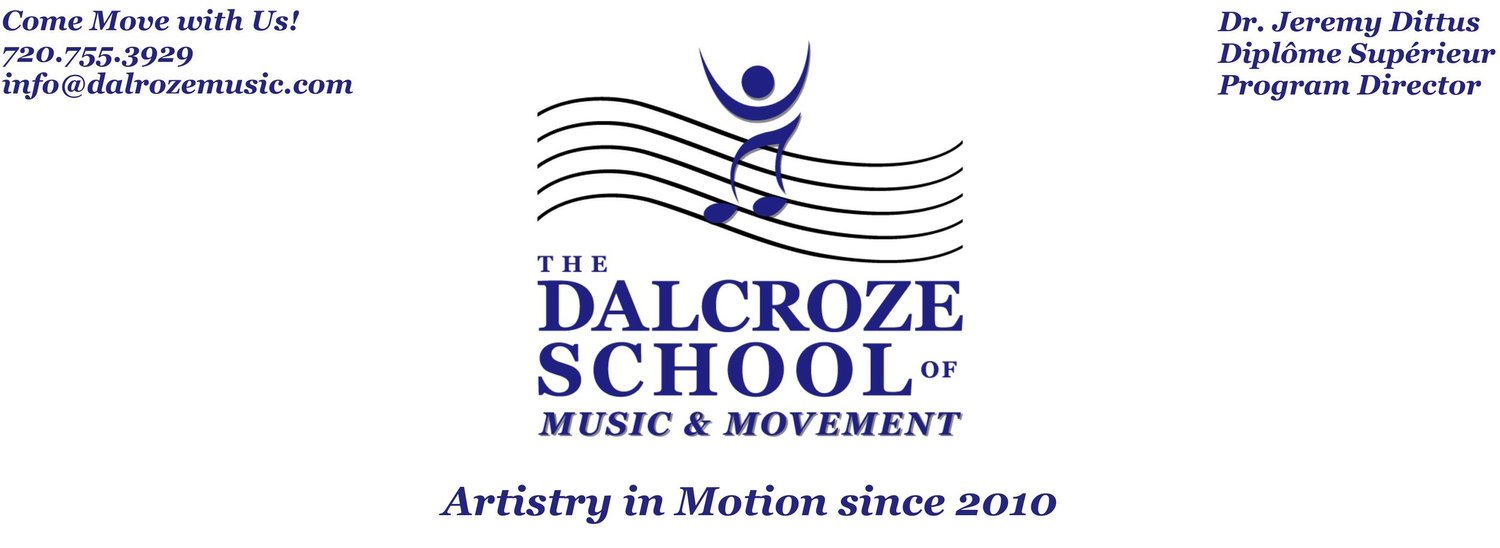What Does Dalcroze Eurhythmics Provide to Dancers?
Emile Jacques-Dalcroze created and implemented his ideas, the first modern method of music education, for pre-professional conservatory students around 1900. His work was modified later for children. It remains an essential part of the curriculum at leading institutions, elementary to collegiate, around the world. Stravinsky, Bloch, Diaghilev, Nijinski, Honegger, Du Pré, and William Westney are among the artists who worked with Dalcroze or were directly affected by his philosophy.
Dalcroze provides a platform for understanding the essential musical concepts necessary for dancers to succeed at their craft. These concepts include:
Internalized rhythm through the body
Understanding of phrase and form
Understanding of different beat types and their corresponding meters
Development of the inner ear
Dalcroze encourages aesthetic development.
Feeling and sensing become primary vehicles for understanding aesthetic concepts.
Affect and meaning are often points of departure for the learning experience thereby impacting performance practice. This actualizes their importance in vivid and authentic ways.
Improvisation in all forms (rhythmic, melodic, corporal) promotes ownership of one's aesthetic self.
For the choreographer, aesthetics is of prime importance, both in the study of minute gesture and large forms and spatial awareness. The Dalcrozian celebrates the study of gesture and visual forms along with their relative impact on the aesthetic experience.
Dalcroze improves non-verbal expression
As non-verbal communication often permeates any dance performance, these elements are often championed in the Dalcroze classroom. Discovering innovative ways to articulate one's self, especially those expressions that are not part of one's everyday emotive vocabulary. These expressions might be through the limbs, the face, the body.
Dalcroze teaches breath and uses it to govern how the body might understand concepts such as:
Musical ideas: beat, meter, rhythm, phrase, form
Corporal control and flow
Expression of energy through time and space
Dalcroze aims to facilitate an improved sense of coordination and balance
Through diverse exercises which engage a multi-leveled approach to the body, the legs, trunk, arms, voice, and head achieve greater independence and increased control of energy, nuance, and expression.
As weight and the study of its impact also predominates a Dalcroze curriculum, dancers can expect to learn new and varied approaches to improve their sense of balance.
Dalcroze study is comprehensive divided into three main categories:
Eurhythmics provides training for structural elements (beat, duration, rhythm, meter, texture, phrase, and form) and aesthetic elements (nuance, dynamics, articulation, tempo, and affect). Students gain control of their bodies, becoming freer to express creatively-both physically and musically.
Solfège trains the eyes, ears, and voice. It enables a student to listen to music and transcribe it onto paper, and to look at sheet music and hear it internally without the use of an instrument.
Improvisation enables students to create music instrumentally or vocally. It usually begins with movement or the voice to facilitate the creative process. Bodily gestures relate to gestures used on the instrument; the connections between movement and music are clarified.
